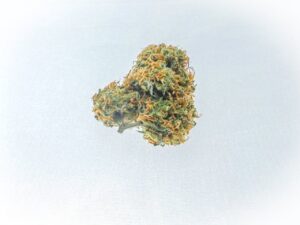Hemp, scientifically known as Cannabis sativa L., is a versatile plant with a rich history and a bright future. For thousands of years, hemp has been cultivated and utilized for a wide range of applications, from food and medicine to textiles and construction materials. Today, as the world increasingly looks toward sustainable and natural solutions, hemp is experiencing a resurgence in popularity. This comprehensive guide explores the many uses, benefits, and potential of hemp, tracing its journey from ancient times to the modern era.
Table of Contents
ToggleThe Historical Significance of Hemp
Ancient Roots
Hemp is one of the oldest cultivated crops in human history, with evidence of its use dating back to around 8,000 BCE. Archeological findings in Taiwan suggest that hemp fibers were used to create ropes and textiles during this period. In ancient China, hemp was highly regarded for its versatility and utility. The Chinese Emperor Shennong, considered the father of Chinese medicine, documented the medicinal properties of hemp as early as 2,800 BCE. Hemp was also used in China to produce paper, clothing, and food, showcasing its multifaceted nature.
Hemp in Ancient Civilizations
As hemp cultivation spread across Eurasia, it became an integral part of many ancient civilizations:
- Mesopotamia: Hemp was used to make ropes, sails, and textiles, contributing to the region’s maritime prowess and trade.
- Egypt: The ancient Egyptians incorporated hemp into their religious rituals and used it to produce cloth and rope. Hemp fibers were also found in the tombs of pharaohs, indicating its significance.
- Greece and Rome: In ancient Greece and Rome, hemp was a crucial resource for shipbuilding. Its strong fibers were used to create durable ropes and sails, essential for their naval fleets.
The Spread to Europe and the Americas
Hemp continued to spread across the world, reaching Europe around 1,200 BCE. By the Middle Ages, hemp was widely cultivated in Europe for its fiber, which was used to produce clothing, ropes, and canvas. The plant was so valuable that it was often a mandatory crop for farmers.
In the 16th century, hemp made its way to the Americas. Spanish colonists brought hemp seeds to South America in 1545, and the British introduced it to North America in the early 1600s. Hemp quickly became a staple crop in the American colonies, with the first legislation mandating its cultivation enacted in 1619 in Jamestown, Virginia.
The Decline and Prohibition of Hemp
Despite its long history of use, hemp faced significant challenges in the 20th century. The Marihuana Tax Act of 1937 in the United States effectively criminalized the cultivation and possession of all forms of cannabis, including hemp. This legislation was driven by racial biases and misinformation, associating cannabis with Mexican immigrants and other marginalized communities.
The demonization of cannabis was further exacerbated by the “Reefer Madness” propaganda campaign, which falsely portrayed the plant as a dangerous, mind-altering drug. As a result, hemp production and use declined significantly throughout the mid-20th century.
The Modern Resurgence of Hemp
Changing Legislation
The tide began to turn in the late 20th and early 21st centuries as public perception and legislation surrounding hemp started to shift. One of the most significant milestones was the 2018 Farm Bill in the United States, which legalized the production of hemp with a THC content of less than 0.3%. This legislation effectively removed hemp from the federal list of controlled substances, paving the way for the expansion of the hemp industry.
Factors Driving Hemp’s Resurgence
Several key factors have contributed to hemp’s modern resurgence:
- Sustainability and Environmental Concerns: As the world becomes increasingly focused on sustainability, hemp has emerged as a compelling solution. It is a highly sustainable crop that requires fewer resources, such as water and pesticides, than traditional crops. Its versatility and eco-friendly properties make it an attractive alternative in various industries.
- Wellness and Therapeutic Applications: The growing interest in natural, plant-based remedies has fueled demand for hemp-derived compounds like CBD (cannabidiol). The discovery of the endocannabinoid system in the human body and the potential therapeutic benefits of cannabinoids have sparked a surge in research and consumer demand.
- Technological Advancements: Innovations in hemp cultivation, processing, and product development have improved the efficiency, quality, and accessibility of hemp-based goods. This has enabled the industry to scale up and meet the increasing consumer demand for hemp products.
The Versatility of Hemp
Hemp is renowned for its versatility, with applications spanning numerous industries. Here, we delve into the many uses of hemp:
Food and Nutrition
Hemp seeds are a nutritional powerhouse, packed with essential nutrients that promote overall health and well-being:
- Protein: Hemp seeds are a complete protein source, containing all nine essential amino acids. This makes them an excellent protein option for vegetarians and vegans.
- Fiber: The high fiber content in hemp seeds aids in digestion and supports a healthy gut.
- Essential Fatty Acids: Hemp seeds are rich in omega-3 and omega-6 fatty acids, which are vital for heart health, brain function, and inflammation reduction.
Hemp seeds can be consumed in various forms:
- Whole Seeds: Enjoyed as a snack or sprinkled on salads, yogurt, and oatmeal.
- Hemp Oil: Cold-pressed from hemp seeds, this oil is used in cooking and as a dietary supplement.
- Hemp Protein Powder: Made from ground hemp seeds, it is used in smoothies and baking to boost protein intake.
Fiber and Textiles
Hemp fibers are among the strongest and most durable natural fibers, making them ideal for textile production:
- Clothing: Hemp fabric is breathable, hypoallergenic, and resistant to mold and UV rays. It is also more sustainable than cotton, as it requires less water and pesticides.
- Bedding: Hemp is used to make bed sheets, pillowcases, and blankets, offering a sustainable and comfortable alternative to traditional materials.
- Construction Materials: Hemp fibers are used in construction materials such as hempcrete—a lightweight, insulating, and fire-resistant alternative to concrete.
Paper and Pulp
Hemp has a long history of use in paper production. It offers several advantages over traditional wood-based paper:
- Sustainability: Hemp grows faster than trees, allowing for quicker and more efficient harvests.
- Durability: Hemp paper is more durable and resistant to aging than wood-based paper.
- Environmental Impact: Hemp requires fewer chemicals for processing and produces less waste, making it a more environmentally friendly option.
Construction Materials
Hemp’s versatility extends to the construction industry, where it is used to create eco-friendly building materials:
- Hempcrete: Made from a mixture of hemp hurds (the woody core of the plant) and lime, hempcrete is a sustainable alternative to traditional concrete. It is lightweight, durable, and provides excellent insulation.
- Insulation: Hemp fibers are used to create natural insulation materials that are non-toxic, breathable, and effective at regulating temperature.
- Bioplastics: Hemp can be used to produce biodegradable plastics, offering a sustainable alternative to petroleum-based plastics.
Fuel and Energy
Hemp is a promising source of renewable energy:
- Biofuels: Hemp can be processed into biodiesel and ethanol, which are renewable alternatives to fossil fuels. The plant’s high cellulose content also makes it suitable for producing bioethanol.
- Biomass: Hemp biomass can be used to generate electricity and heat, providing a sustainable energy source.
Medicine and Wellness
Hemp has been recognized for its medicinal properties for centuries. Today, its therapeutic potential is being explored through scientific research:
- CBD: Cannabidiol (CBD) is a non-psychoactive compound found in hemp that has gained popularity for its potential health benefits. CBD is used in various products, including oils, tinctures, capsules, and topicals, to address conditions such as pain, inflammation, anxiety, and seizures.
- THC-A: Tetrahydrocannabinolic acid (THC-A) is another compound found in hemp that is being studied for its potential therapeutic effects. Unlike THC, THC-A is non-psychoactive and may offer anti-inflammatory and neuroprotective benefits.
The Environmental Benefits of Hemp
Hemp’s environmental benefits make it an attractive option for sustainable agriculture and industry:
Carbon Sequestration
Hemp is highly efficient at capturing carbon dioxide (CO2) from the atmosphere. During its growth cycle, hemp absorbs more CO2 per hectare than most other crops, making it a valuable tool in combating climate change.
Soil Health
Hemp is a soil-friendly crop that can improve soil health in several ways:
- Phytoremediation: Hemp has the ability to absorb and break down pollutants in the soil, making it useful for cleaning contaminated land.
- Nutrient Recycling: Hemp’s deep roots help to aerate the soil and improve nutrient cycling, which can enhance soil fertility and structure.
- Pest Resistance: Hemp is naturally resistant to many pests and diseases, reducing the need for chemical pesticides.
Water Efficiency
Hemp requires significantly less water than many traditional crops, such as cotton. This water efficiency makes hemp a more sustainable choice for water-scarce regions.
Biodiversity
Hemp cultivation can promote biodiversity by providing habitat for beneficial insects and other wildlife. Additionally, hemp’s rapid growth can outcompete weeds, reducing the need for herbicides.
The Economic Opportunities of Hemp
The resurgence of the hemp industry has created numerous economic opportunities for farmers, manufacturers, and entrepreneurs:
Farming and Agriculture
Hemp farming offers several advantages for agricultural communities:
- Crop Rotation: Hemp is an excellent crop for rotation, as it can improve soil health and reduce pest pressures for subsequent crops.
- Economic Viability: Hemp’s versatility allows farmers to diversify their income streams by producing a range of products, from food and fiber to biofuels and medicine.
- Rural Development: The growth of the hemp industry can stimulate rural economies by creating jobs and supporting local businesses.
Manufacturing and Industry
The hemp industry encompasses a wide range of manufacturing and industrial applications:
- Textiles and Apparel: The demand for sustainable and eco-friendly clothing has driven growth in the hemp textile market.
- Construction: Hemp-based building materials are gaining popularity for their sustainability and performance.
- Bioplastics and Packaging: The shift toward biodegradable and renewable materials has increased interest in hemp-based bioplastics.
Research and Innovation
The potential applications of hemp are vast, driving ongoing research and innovation:
- Biomedical Research: Studies on hemp-derived compounds, such as CBD and THC-A, continue to explore their therapeutic potential.
- Industrial Applications: Research into new uses for hemp fibers, hurds, and oils is expanding the possibilities for hemp-based products.
- Sustainability Solutions: Innovations in hemp cultivation and processing are enhancing the plant’s environmental benefits and economic viability.
The Challenges and Barriers to Hemp Industry Growth
Despite its many advantages, the hemp industry faces several challenges and barriers to growth:
Legal and Regulatory Issues
The legal landscape for hemp varies widely across different countries and regions. While the 2018 Farm Bill legalized hemp production in the United States, other countries still have restrictive laws. Navigating these legal complexities can be challenging for businesses and investors.
Market Development
The hemp market is still in its early stages, and many consumers are not fully aware of the benefits and applications of hemp products. Educating the public and building market demand are crucial for the industry’s growth.
Supply Chain Infrastructure
Building a robust supply chain for hemp products involves developing infrastructure for cultivation, processing, manufacturing, and distribution. This requires significant investment and coordination among various stakeholders.
Research and Development
Continued research and development are essential to unlock the full potential of hemp. However, funding and regulatory barriers can limit the scope and pace of scientific research.
The Future of Hemp
As the world grapples with pressing environmental, economic, and health-related challenges, the future of hemp looks increasingly promising. Here are some key trends and areas of focus for the future:
Sustainable Agriculture and Industry
Hemp’s environmental benefits position it as a key player in sustainable agriculture and industry. Innovations in hemp cultivation and processing will continue to enhance its sustainability and economic viability.
Medical and Therapeutic Applications
Ongoing research into the therapeutic potential of hemp-derived compounds, such as CBD and THC-A, will drive growth in the wellness and pharmaceutical sectors. As more scientific evidence emerges, hemp-based therapies may become mainstream options for various health conditions.
Technological Advancements
Advancements in technology will improve the efficiency and quality of hemp cultivation, processing, and product development. Innovations such as precision agriculture, automated processing, and advanced extraction methods will enhance the industry’s competitiveness.
Global Market Expansion
As legal and regulatory barriers are addressed, the global hemp market will continue to expand. Countries around the world are recognizing the potential of hemp and are beginning to develop their own hemp industries.
Consumer Awareness and Demand
Increasing consumer awareness of the benefits and applications of hemp will drive demand for hemp products. Marketing and educational efforts will play a crucial role in shaping consumer perceptions and preferences.
Conclusion
Hemp is a remarkable plant with a rich history and immense potential. Its versatility, sustainability, and therapeutic properties make it a valuable resource for addressing some of the world’s most pressing challenges. As the hemp industry continues to grow and evolve, it holds the promise of a more sustainable, innovative, and health-conscious future.
From its ancient roots in Asia to its modern resurgence, hemp has demonstrated its unparalleled potential to transform industries, promote sustainability, and enhance well-being. By continuing to explore and harness the many uses and benefits of hemp, we can unlock a brighter and more sustainable future for generations to come.
Embark on this journey through the ultimate guide to hemp, and discover the remarkable potential of this ancient plant to shape the future of our world.
Do You Need a Cannabis Dispensary You Can Trust?
Get Ready to Join the Holistic Health Revolution Today! For over a decade, A Therapeutic Alternative has been at the forefront of advocating for medical cannabis patient’s rights. Our passion for providing high-quality products and services has helped us inspire health on a holistic level for our members, employees, and community. Located in the heart of the medical district in Midtown Sacramento, our facilities prioritize education and empower our staff, industry, and members through knowledge. We don’t just talk the talk, we walk the walk, modeling professionalism, compassion, and integrity in the industry. With an ADA lift and ample parking options, including a lot directly behind the building and free street parking, visiting us has never been easier. So, if you’re looking for top-notch Indica Vape Cartridges and a community dedicated to health and happiness, look no further than A Therapeutic Alternative. Join the movement today and discover the transformative power of holistic health.




